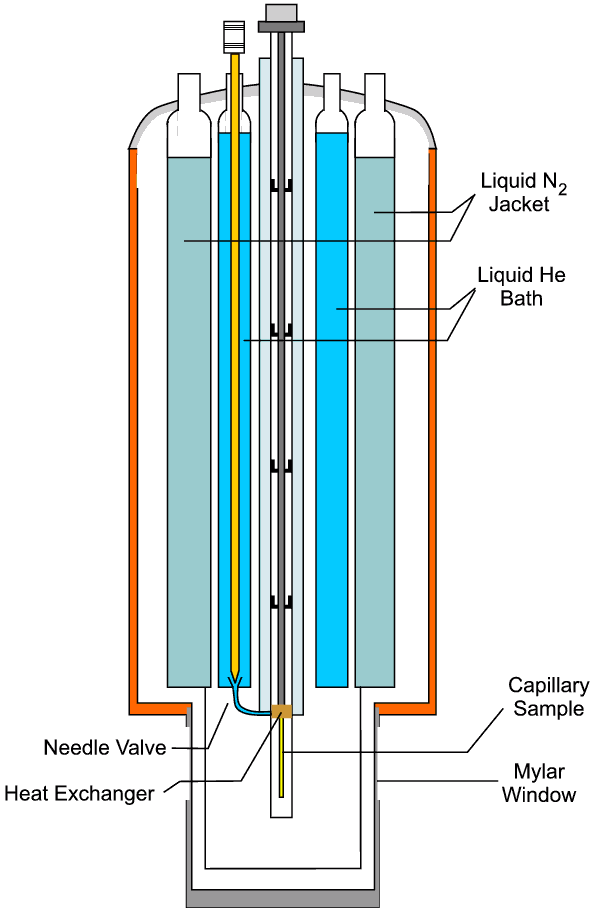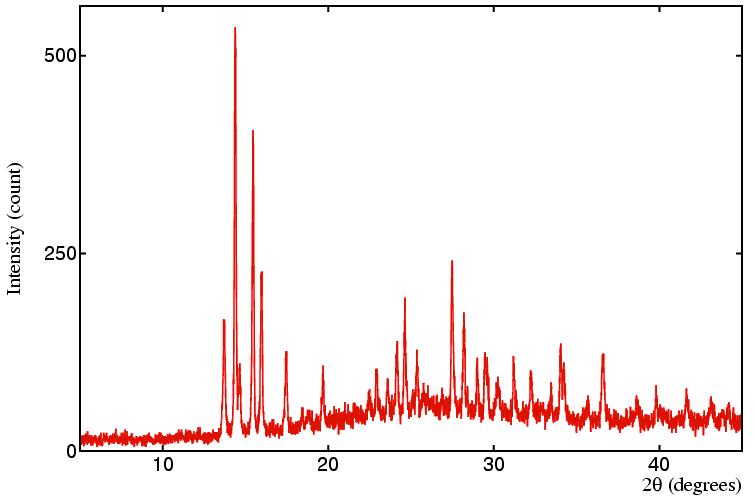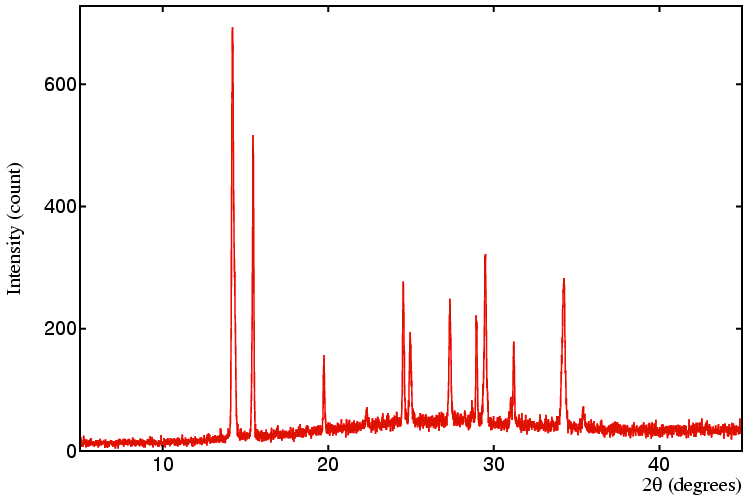 |
Temperature
I. Low |
 |
Temperature
I. Low |
Low
It will often be the case that temperature will not be the only variable of interest for non-ambient studies. However a brief consideration of temperature is in order before we move onto more complex environments.
Serious low temperatures studies are achieved using a device known as a cryostat which uses a combination of gravity-fed or pumped liquid gases (N2 = nitrogen and He = helium) to cool the sample. A schematic and actual cryostat are shown below.

The effective thermal connection between the sample and the outside world is: Sample → He-cooled platform → vacuum → liquid helium jacket → vacuum → liquid nitrogen jacket → vacuum → outside world. This will normally get a sample to within a degree or so of the absolute zero (0 K or ≈ −273°C). However consideration must also be given to providing a window for the incident and diffracted radiation; in the case of neutrons the window is usually aluminium; for synchrotron X-rays one usually uses beryllium; while for non-penetrating X-rays (say a laboratory source with a copper tube at 1.54 Å) a thin mylar or capton sheet is preferred for ease of alignment. An example is given next of the use of a low temperature cryostat to study the phase transformations in an organic complex between room temperature and 10 K.
 |
| 10 K |
 |
| 220 K |
 |
| 250 K |
|
© Copyright 1997-2006.
Birkbeck College, University of London.
|
Author(s):
Paul Barnes Simon Jacques Martin Vickers Jeremy Karl Cockcroft |